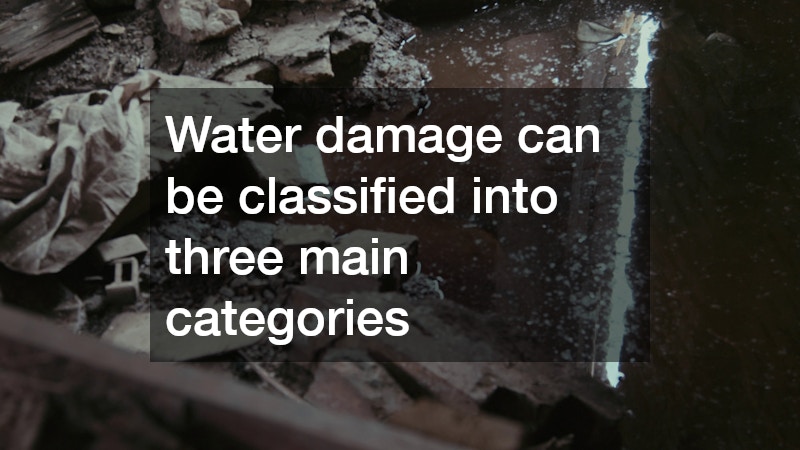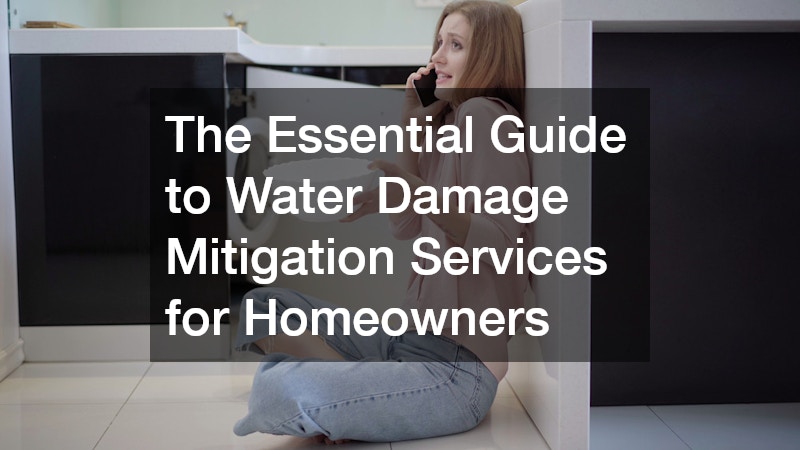Understanding the impact of water damage on your home and the importance of swift mitigation is crucial for every homeowner. Water damage can lead to severe structural issues, health hazards, and substantial financial burdens if not addressed quickly and efficiently. A comprehensive approach to water damage mitigation can save homeowners from unnecessary stress and ensure their home’s longevity. This guide aims to provide in-depth knowledge about water damage mitigation services and how homeowners can protect their investments.
What Are Water Damage Mitigation Services?
Water damage mitigation services are specialized procedures designed to reduce and prevent the impact of water damage in homes. These services aim to stop water damage at its source and minimize the escalation of problems resulting from water intrusion.
Mitigation involves immediate actions to contain and manage the damage, preventing further complications and preserving the property’s structural integrity. Professional mitigation services are essential to ensure thorough and effective treatment, protecting both the home and its occupants.
While water damage mitigation focuses on preventing further damage, restoration involves returning the property to its pre-damaged state. Mitigation is the initial response to manage and control the damage, while restoration encompasses the processes required to repair and rebuild affected areas. Knowing the difference between these two can help homeowners choose the right service for their specific situation. Both processes are crucial, but they serve different roles in the overall recovery from water damage.
Water damage can be classified into three main categories: clean water damage, grey water damage, and black water damage. Clean water damage originates from sources like broken pipes or rainwater, posing minimal health risks. Grey water damage is caused by water from appliances and may contain contaminants that require careful handling. Black water damage is the most severe, involving water from sewage or flooding, which poses serious health hazards and requires professional intervention.
Water damage in homes can result from various sources, including natural disasters, plumbing failures, and structural leaks. Heavy rains and storms can lead to flooding, overwhelming drainage systems and seeping into basements. Burst pipes or faulty appliances can cause sudden internal flooding, while small leaks in roofs can develop into significant problems over time. Identifying the source of water damage is crucial for effective mitigation and prevention.
How to Choose the Right Water Damage Mitigation Service
When choosing a water damage mitigation service, thorough research and comparison of companies are essential. Look for companies with a strong track record of effective mitigation, prompt responses, and satisfied customers. Obtaining quotes from several providers can help homeowners understand market rates and make informed decisions. Don’t hesitate to ask questions about their experience, methods, and any guarantees they offer.
Ensuring that a mitigation company holds the necessary licenses and certifications is crucial for a homeowner seeking professional services. Licensed companies have met rigorous standards and have the expertise needed to handle water damage situations effectively. Certifications from reputable industry organizations demonstrate a commitment to continuous education and adherence to the latest industry standards. Checking these credentials can provide peace of mind and assurance of quality service.
Customer reviews and testimonials offer valuable insights into the service quality and customer experience of a water damage mitigation company. Positive reviews often highlight a company’s responsiveness, professionalism, and effectiveness in addressing water damage issues. Look for patterns in feedback to determine the strengths and weaknesses of potential service providers. Reliable companies typically have a strong online presence and a wealth of satisfied customer recommendations.
Understanding the costs associated with water damage mitigation services is vital for homeowners planning their budgets. Obtaining detailed estimates before work begins can help avoid unexpected expenses and provide clarity on what is covered. Additionally, communicating with insurance providers to understand coverage options can relieve financial burdens. Comprehensive quotes combined with effective insurance claims can help homeowners manage the financial impact of water damage.
Steps Involved in the Water Damage Mitigation Process
The mitigation process begins with a thorough inspection and assessment of the damage site. Professionals identify the source and extent of water damage, evaluating its impact on the property and potential safety hazards. Accurate assessment is crucial for planning effective mitigation strategies and determining required resources. This foundational step sets the stage for a systematic and efficient mitigation process tailored to specific damage conditions.
Following the assessment, the next critical step is the extraction and removal of standing water. Professionals use specialized equipment to remove large volumes of water swiftly, preventing further damage and reducing drying time. Efficient water extraction mitigates risks associated with prolonged exposure to water, such as mold growth and structural weakening. Quick and thorough water removal is integral to minimizing damage escalation.
Preventive Measures Homeowners Can Take
Regular maintenance and inspections can significantly reduce the risk of water damage in homes. Routine checks of plumbing systems, roofs, and drainage prevent small issues from becoming costly problems. Early detection of potential vulnerabilities allows homeowners to address them proactively before significant damage occurs. A consistent maintenance schedule is an effective defense against unexpected water-related incidents.
Water detection devices provide an added layer of protection, alerting homeowners to potential leaks or flooding. These devices can be placed in vulnerable areas, such as basements or near appliances, to detect moisture and sound alarms. Integrating smart technology allows homeowners to receive real-time alerts on their mobile devices, enabling rapid responses. Early warnings can prevent extensive damage by enabling prompt action.
Highlighting the importance of proactive water damage mitigation to protect your home investment is crucial for every homeowner. Understanding the risks and implementing preventive measures ensures that water-related incidents are managed efficiently and effectively. Prompt professional intervention and informed choices preserve property integrity and safeguard health and well-being. By staying informed and prepared, homeowners can minimize the impact of water damage, ensuring peace of mind and a secure living environment.

